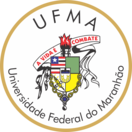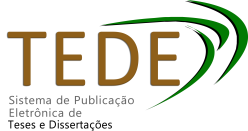| Compartilhamento |


|
Use este identificador para citar ou linkar para este item:
https://tedebc.ufma.br/jspui/handle/tede/5888| Tipo do documento: | Dissertação |
| Título: | ENSINO DE LIBRAS COMO L2M2 EM AVAs: UMA ANÁLISE DO CURSO LIVRE DA UEMANET À LUZ DA COMPLEXIDADE |
| Título(s) alternativo(s): | TEACHING LIBRAS AS L2M2 IN AVAs: AN ANALYSIS OF THE UEMANET FREE COURSE IN LIGHT OF COMPLEXITY |
| Autor: | ALENCAR, Waldérick de Oliveira Mendes  |
| Primeiro orientador: | ARAÚJO JÚNIOR, João da Silva |
| Primeiro membro da banca: | ARAÚJO JÚNIOR, João da Silva |
| Segundo membro da banca: | SILVA, Lídia da |
| Terceiro membro da banca: | SILVA, Ana Lúcia Rocha |
| Quarto membro da banca: | SANTOS, Naiara Sales Araújo |
| Resumo: | Esta pesquisa aborda o ensino de Libras como Segunda Língua de Segunda Modalidade (L2M2) em Ambientes Virtuais de Aprendizagem (AVAs), focando no curso livre básico de Libras oferecido pela UEMAnet, utilizando a Teoria da Complexidade com ênfase nas características dos Sistemas Adaptativos Complexos (SACs). O estudo tem como objetivo geral analisar as marcas de complexidade no ensino de Libras como L2M2 no curso livre do AVA da UEMAnet, considerando tanto o ensino de Libras como L2M2 quanto o AVA da UEMAnet como SACs. Baseando-se na Teoria da Complexidade de Edgar Morin (2015) e em autores como Larsen- Freeman (1997), Paiva (2014), Borges e Silva (2016), Souza (2011), dentre outros, a pesquisa explora os desafios do ensino de uma língua cinésico-visual como a Libras em ambientes digitais. Metodologicamente, foram realizadas análises qualitativas dos conteúdos do curso, enfatizando a estrutura, os recursos tecnológicos e as práticas pedagógicas adotadas para a formação de ouvintes em Libras como L2M2 na modalidade a distância. Com ênfase na auto-organização e na adaptabilidade dos SACs, a análise evidencia que o AVA permite o aprendizado flexível e autônomo, o que é essencial para a introdução de sinais básicos e estruturas gramaticais da Libras como L2M2. O trabalho destaca a importância dos AVAs na democratização do acesso ao ensino de Libras como L2M2, abordando também as implicações socioculturais e a contribuição da modalidade EAD para o uso, difusão e valorização da Língua de Sinais. Entretanto, a pesquisa também identifica limitações específicas, como a falta de interações síncronas e feedback imediato, que são fundamentais para a fluência em uma língua cinésico-visual. A ausência de ambientes gamificados e espaços colaborativos prejudica a prática interativa, dificultando o desenvolvimento integral das habilidades linguísticas dos alunos. Por fim, sugerem-se aprimoramentos tecnológicos e metodológicos, como a inserção de ferramentas colaborativas, para ampliar o potencial do ensino de Libras como L2M2 em AVAs, promovendo uma experiência educacional mais dinâmica e interativa. |
| Abstract: | This research deals with Brazilian Sign Language (BSL) teaching as a Second Language of the Second Modality in Virtual Learning Environments (VLE), focusing on the free basic course of BSL offered by UEMAnet, it uses the Complexity Theory with emphasis on the characteristics of Complex Adaptive Systems (CAS). This study has the general objective of analyzing the marks of complexity of BSL teaching as a Second Language of the Second Modality in this educational environment, considering BSL teaching as much as VLE of UEMAnet as a Complex Adaptive System. Based on Complexity Theory of Edgar Morin (2015) and authors such as Larsen-Freeman (1997), Paiva (2014), Borges e Silva (2016), Souza (2011), and others, the research explores the challenges of teaching a kinesiological-visual language as a BSL in virtual environments. Methodologically, qualitative analyses of the course contents were analyzed, with emphasis on the structure, technological resources and pedagogical practices adopted for the formation of BSL listeners as a Second Language of the Second Modality in distance mode. With emphasis on self-organization and adaptability of CAS, the analysis shows that the VLE allows flexible and autonomous learning, this is essential for the introduction of basic signs and grammar structures of the BSL as a Second Language. This work highlights the importance of VLE in democratizing access to education in BSL as a Second Language of the Second Modality. Also addressing the sociocultural implications and the contribution of the distance learning modality to the use, dissemination and enhancement of Sign Language. However, the research also identifies specific limitations such as lack of synchronous interactions and immediate feedback that are fundamental to fluency in a kinesic-visual language. The absence of gamified environments and collaborative spaces impairs interactive practice, hindering the integral development of students’ language skills. Finally, technological and methodological improvements are suggested as the insertion of collaborative tools to expand the potential of BSL teaching as a Second Language of the Second Modality in VLE, promoting a more dynamic and interactive educational experience. |
| Palavras-chave: | ensino; Libras; segunda língua; AVAs; complexidade teaching; Brazilian Language Sign; Second Language; Virtual Learning Environments; complexity |
| Área(s) do CNPq: | Educação Especial |
| Idioma: | por |
| País: | Brasil |
| Instituição: | Universidade Federal do Maranhão |
| Sigla da instituição: | UFMA |
| Departamento: | DEPARTAMENTO DE LETRAS/CCH |
| Programa: | PROGRAMA DE PÓS-GRADUAÇÃO EM LETRAS - Campus Bacanga |
| Citação: | ALENCAR, Waldérick de Oliveira Mendes. Ensino de Libras como L2M2 em AVAS: Uma análise do curso livre da UEMANET à luz da complexidade.2025. 83 f. Dissertação( Programa de Pós-graduação em Letras - Campus Bacanga) - Universidade Federal do Maranhão, São Luís, 2025. |
| Tipo de acesso: | Acesso Aberto |
| URI: | https://tedebc.ufma.br/jspui/handle/tede/5888 |
| Data de defesa: | 29-Jan-2025 |
| Aparece nas coleções: | DISSERTAÇÃO DE MESTRADO - PROGRAMA DE PÓS-GRADUAÇÃO EM LETRAS - CAMPUS BACANGA |
Arquivos associados a este item:
| Arquivo | Descrição | Tamanho | Formato | |
|---|---|---|---|---|
| WALDÉRICK DE OLIVEIRA MENDES ALENCAR.pdf | Dissertação de Mestrado | 1,15 MB | Adobe PDF | Baixar/Abrir Pré-Visualizar |
Os itens no repositório estão protegidos por copyright, com todos os direitos reservados, salvo quando é indicado o contrário.




